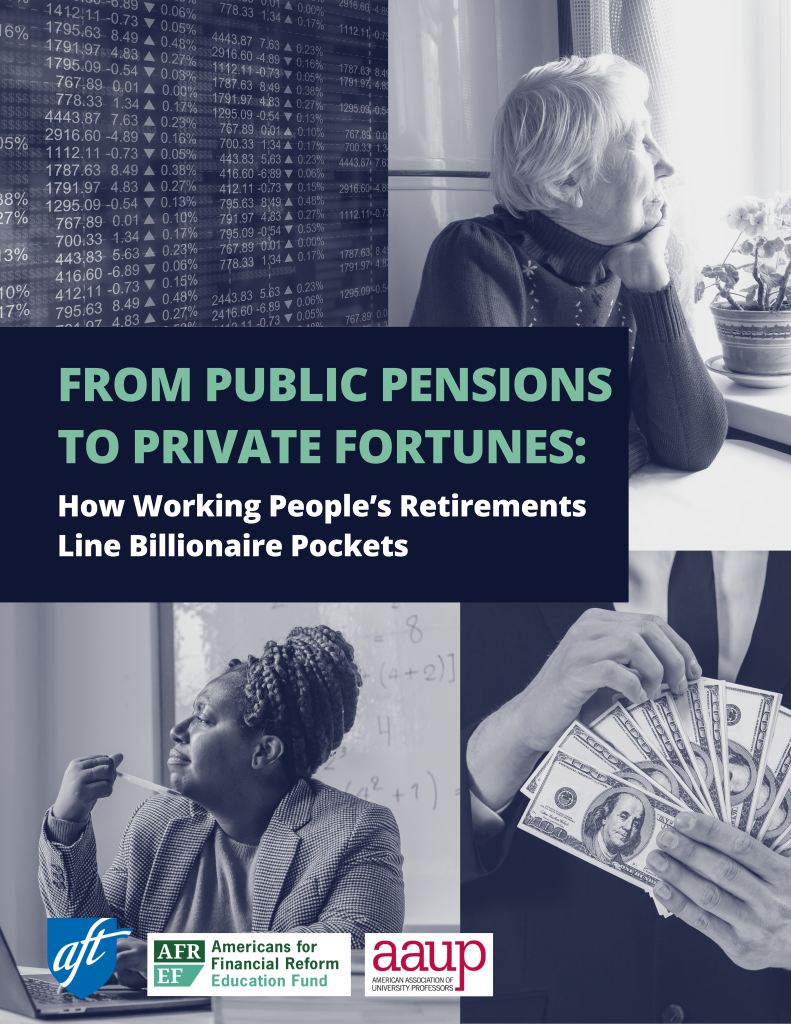AFT and Americans for Financial Reform Education Fund’s report, “From Public Pensions to Private Fortunes: How Working People’s Retirements Line Billionaire Pockets,” investigates how private equity does not deliver the superior returns that its advocates insist justify pension fund investment in this sector, and how such investments would be highly risky for retail investors.
The private equity industry defends its debt-fueled leveraged buyout model as necessary to provide purportedly high yields, and it argues that expanding into other parts of the U.S. retirement system would offer advantages to more working people. But extensive data and analysis by the AFT and AFREF tell a different story:
- Private equity profitability has been in year-over-year decline for the past 20 years.
- One study found that Florida pensions would have earned a billion dollars more between 1988 and 2011 if they had not invested in private equity.
- Private equity executives frequently manipulate how they report asset values.
- Stability is a selling point for private equity, but volatility in actual asset values is just as high as in the public markets.
- The internal rate of return, the common way private equity funds report returns to investors, is an easily and often gamed measure.
- Fee structures—paid directly by investors or indirectly through portfolio companies—are prone to extensive manipulation.
- Excessive fees can also damage portfolio companies’ financial health and further hamper investor returns.
- The benchmarks that private funds use to justify their stewardship of companies are inaccurate reflections of their portfolios.
- Private equity secondary markets—a new and growing practice where an investor buys an existing interest from a limited partner investor in a private equity fund—confirm that sellers take substantial losses when they sell fund shares, calling fundamental asset values into question.

Other Reports
-

FIRE SALES TO WALL STREET: A Review of Government-Sponsored Residential Note Sales
-

Unequal Burdens Private Equity-Backed Fossil Fuel Assets and the Global South
-

Rising Property Insurance Premiums: The Uneven Risks to Household and Systemic Financial Stability
-

From Public Pensions to Private Fortunes: How Working People’s Retirements Line Billionaire Pockets

